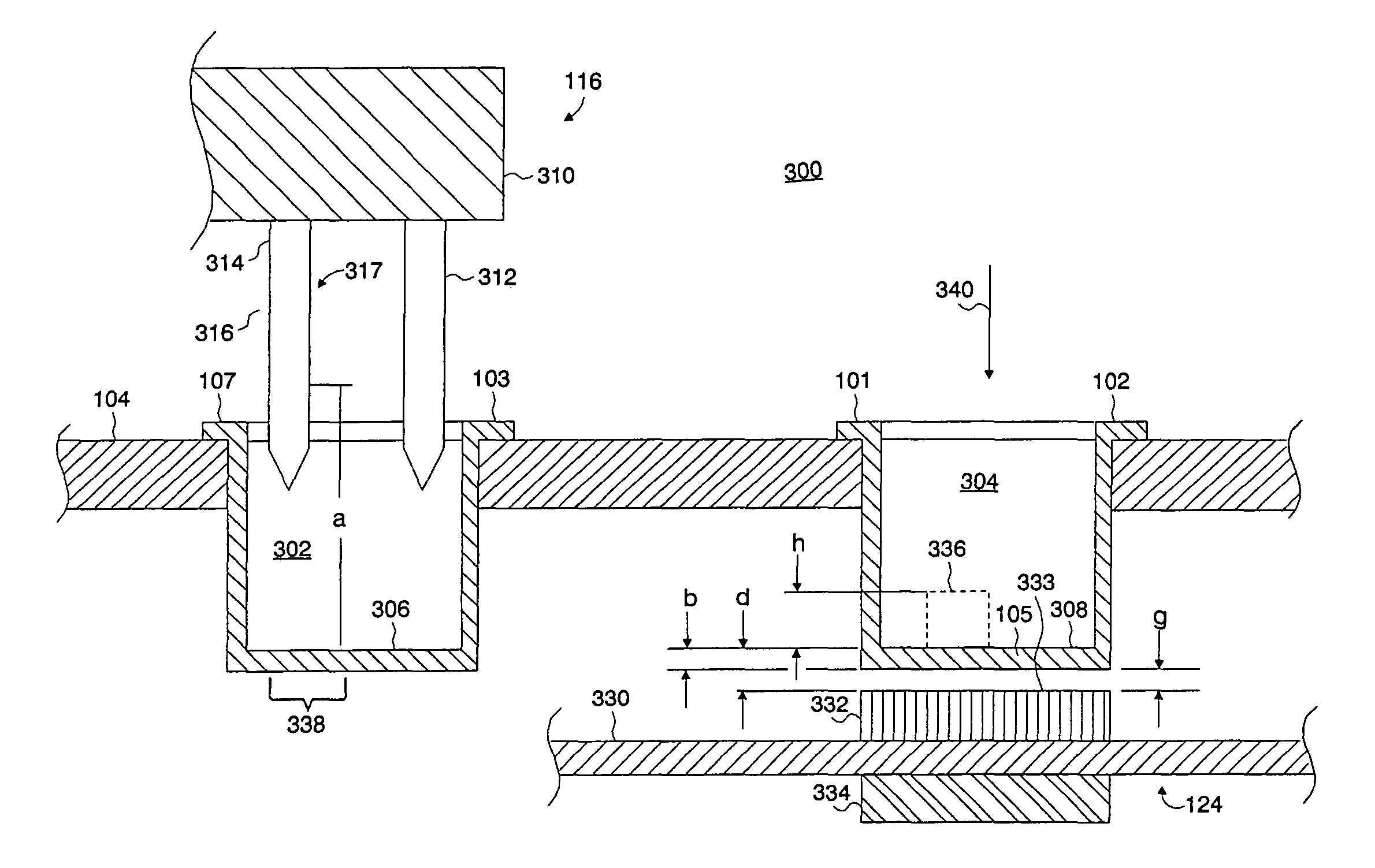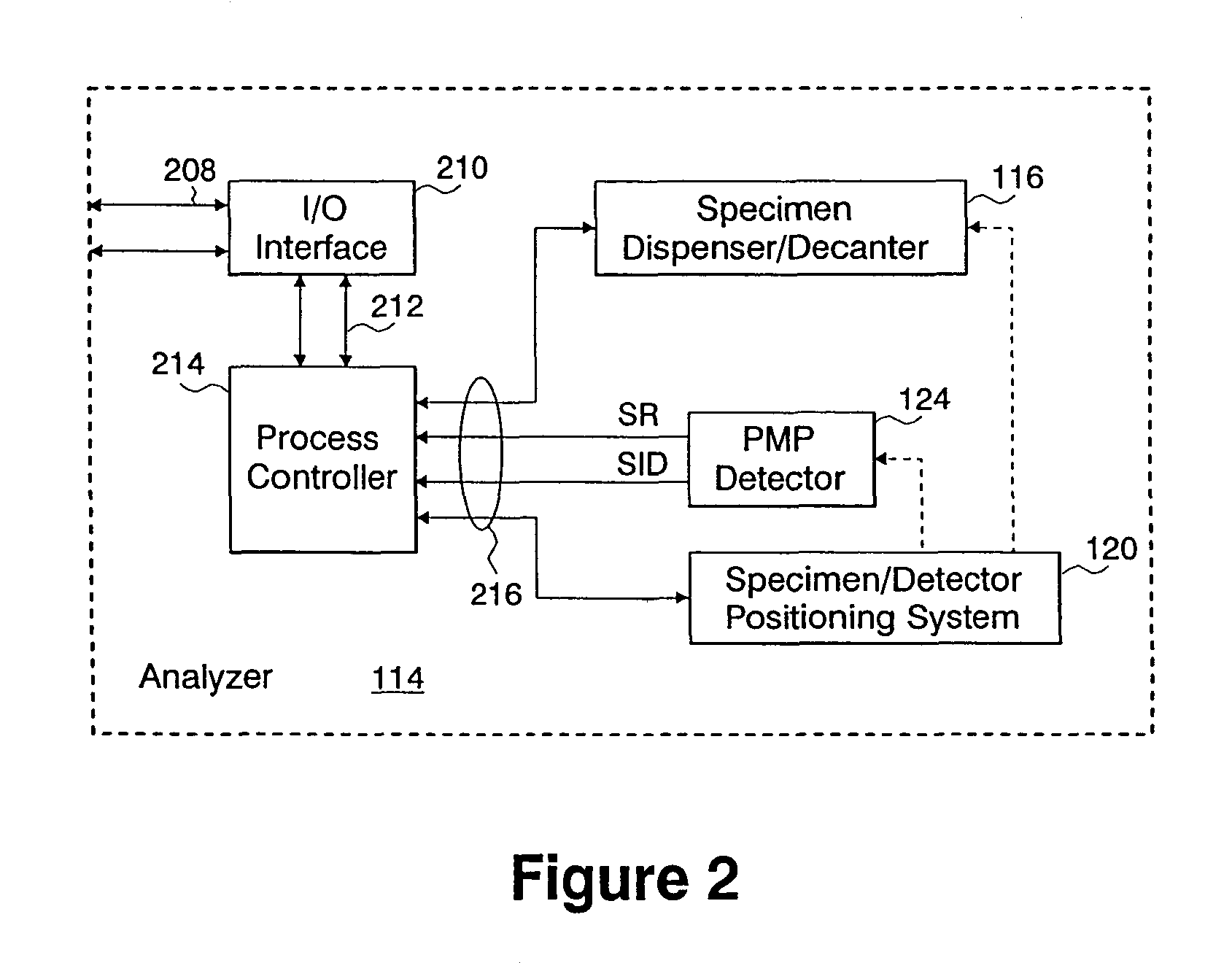System and method for biochemical assay
- Summary
- Abstract
- Description
- Claims
- Application Information
AI Technical Summary
Benefits of technology
Problems solved by technology
Method used
Image
Examples
Embodiment Construction
[0026]Systems and methods of the present invention accomplish a biochemical assay of a fluid specimen. A biochemical assay includes any examination of a specimen for the determination of a characteristic of a biochemical substance. For instance, such an assay may be used to determine the concentration of a substance in the specimen or a property of a substance. Such a substance may be a protein, an enzyme, a portion of a DNA molecule, a carbohydrate molecule, a drug (medicinal or harmful), a hormone, a marker (e.g., cancer marker, cardiac marker, a pathogenic disease marker, etc.), a blood cell, a bacterial cell, a fungal cell, a virus, or a parasite, to name a few representative examples. Properties of substances which may be determined by a biochemical assay may describe cell adhesion binding, ligand-receptor binding, antibody-antigen binding, binding affinity or unbinding force (e.g., molecular or intercellular), hybridization events, or the composition of a molecule (e.g., DNA o...
PUM
 Login to View More
Login to View More Abstract
Description
Claims
Application Information
 Login to View More
Login to View More - R&D
- Intellectual Property
- Life Sciences
- Materials
- Tech Scout
- Unparalleled Data Quality
- Higher Quality Content
- 60% Fewer Hallucinations
Browse by: Latest US Patents, China's latest patents, Technical Efficacy Thesaurus, Application Domain, Technology Topic, Popular Technical Reports.
© 2025 PatSnap. All rights reserved.Legal|Privacy policy|Modern Slavery Act Transparency Statement|Sitemap|About US| Contact US: help@patsnap.com



